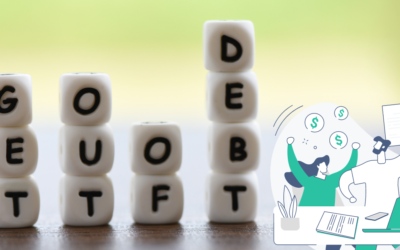Financial Calculators
Let’s face it, when it comes to financial calculators, we need all the help we can get. Below we have put together the most useful, and simplest calculators you will need in each step of your personal financial journey.
Personal Loan Calculator
Click here to visit the most comprehensive personal loan calculator you can find online right now.
Vehicle Finance Calculator
Click here to visit the most comprehensive car loan calculator you can find online right now.
Tax Calculator
Click here to get all the tax tools & calculators you will need to make sense of all that confusing tax stuff!
Retirement Calculator
Click here if you also need some help in understanding how far you actually are from having enough retirement savings.
Savings Calculator
Click here if you want to see what your savings can look like when you put it in a separate and safe fixed deposit account.
Investment Calculator
See what it takes to unlock your financial future when you start seriously investing money every month with this tracker.
Budgeting Calculator
Not sure what to do with your money? Get control by using a simple budget tracking tool like this one.
Home Loan Calculator
Want to see how long you will be paying into that home loan? This is one of the most popular home loan tracking spreadsheets!
Cash Flow Projection Tool
This simple to use but powerful cash flow projection spreadsheet will help you achieve better cash flow management.
Monthly Budgeting Tool
Struggling to hit the positive balance with your monthly budgeting? Use this along with the cash flow tool to finetune your budgeting.
Project vs. Actual Budget
Do you keep ending up in the negative with your budget? Use this spreadsheet to compare your forecasted vs actual monthly spending.
Couples Budgeting Tool
As if finances for one person isn’t complicated enough! Achieve your goals together with this couple’s focused budgeting spreadsheet.
Learn more about why and when to use these calculators
Understanding and learning how to manage your personal finances can feel like an overwhelming journey. On top of that, most of us probably struggle a little bit to make sense of all the financial math! Let’s face it, when it comes to financial calculators, we need all the help we can get. Above we have put together the most useful, and simplest calculators you will need in each step of your personal financial journey.
With all the tricky decisions to make, there are thankfully some very helpful tools and calculators that you can use to discover what’s best for your financial future.
Let’s take a look at when to use some of these calculators.
When should you use a personal loan calculator?
You can use a personal loan calculator to work out how much finance you qualify for, estimate your monthly repayments or see how changes in term, interest rates, missed and early payments affect your current loan.
How do you use a personal loan calculator?
Personal loan calculators require you to input your desired loan amount, how long you need to pay the loan back, and what interest rate you’re offered, and the calculator produces information on your estimated monthly repayment, first payment date and the total amount of your interest and fees, among other useful data regarding your loan application.
Important terms to understand when using a loan term and loan repayment calculator:
When using the various loan calculators and tools available, there are some terms to familiarise yourself with:
- APR – The Annual Percentage Rate is the rate that includes the interest expense on the loan along with the fees and other costs involved in getting the loan, such as bank or broker fees, closing costs, rebates, and discount points.
- Interest Rates – The interest rate on a loan is the proportion of a loan that is charged as interest to the borrower on top of your principal loan amount. This is essentially the ‘profit margin’ that the bank or lender will make on lending you the money.
- Loan Terms – The loan terms refers to the things that will affect your loan agreement and amount, such as duration and interest rate.
- Penalties – Penalties refer to the additional costs involved in missing any payments or breaching any terms of the loan agreement.
- Credit Life Insurance – A credit life insurance policy will pay your debt either in part or in full to the bank if you are unable to pay. This is seen as a form of security for you and the bank.
- Fees – The fees are often in reference to the mark-up or administration costs that the lender takes on, and therefore added to your repayments.
What should you do after using a personal loan repayment calculator?
After familiarizing yourself with the loan calculator process, and knowing what you can and can’t afford to borrow, you can use Fincheck’s marketplace to compare and apply for loans that suit your needs.
When should you use a vehicle finance calculator?
When looking to purchase a car, it’s a good idea to use a vehicle finance calculator to get an understanding of the types of loan options available, and what you’ll likely be paying monthly for your chosen vehicle value.
How do you use a vehicle loan calculator?
Entering your income, expenses, the value of the car you’re attempting to purchase, your desired loan term, and whether you have a deposit and what that amount is, will help produce results to work out what you can currently afford.
Important terms to understand when using a vehicle finance repayment calculator
- APR – The Annual Percentage Rate is the rate that includes the interest expense on the loan along with the fees and other costs involved in getting the loan, such as bank or broker fees, closing costs, rebates, and discount points.
- Interest Rates – The interest rate on a vehicle loan is the proportion of a loan that is charged as interest to the borrower on top of your principal loan amount. This is essentially the ‘profit margin’ that the bank or lender will make on lending you the money.
- Repayment Terms – The repayment terms is the time of borrowing to repay the full loan. If you have a 5-year repayment term, you’ll be making monthly repayments for a duration of 5 years.
- Penalties – Penalties refer to the additional costs involved in missing any payments or breaching any terms of the loan agreement.
- Credit Life Insurance – A credit life insurance policy will pay your debt either in part or in full to the bank if you are unable to pay. This is seen as a form of security for you and the bank.
- Fees – The fees are often in reference to the mark-up or administration costs that the lender takes on, and therefore added to your repayments.
- Deposit – The deposit is a larger amount that you can pay upfront in order to bring your monthly payments and interest down.
- Balloon Payment – If you’re struggling to afford the monthly payments on a car, a balloon payment will allow you to take an amount owing on the purchase price of the car and set it aside. This will result in the monthly instalment amounts being lower. However, at the end of the loan period, you still have to pay that outstanding amount that you set aside, and it will have interest on it too. This amount is the final balloon payment.
What should you do after using a vehicle finance repayment calculator?
After understanding what your budget allows for, you can use the Fincheck Marketplace to compare a number of different vehicle loan options and apply for the ones which suit your needs best.
When should you use a credit card calculator?
Use the credit card calculator to see how much you really pay on your credit card repayments after interest has been included.
How do you use a credit card calculator?
Using the credit card calculator, simply enter your credit details, including the interest rate, your credit amount, and your repayment period. This will give you what your monthly instalments will be.
Important terms to understand when using a credit card repayment calculator
- APR – The Annual Percentage Rate is the rate that includes the interest expense on the credit card, along with the fees and other costs involved in getting the loan, such as bank or broker fees, closing costs, rebates, and discount points.
- Interest Rates – The interest rate on a credit card is the proportion of a loan that is charged as interest to the borrower on top of your principal loan amount. This is essentially the ‘profit margin’ that the bank or lender will make on lending you the money.
- Interest-Free Period – An interest-free period varies from credit card to credit card, but it’s the period after you make your repayment and clear the outstanding debt before you are charged again. For example, if you are being billed on the 31st of the month, but manage to make your repayment early on the 21st, you’ll have a 10-day interest-free period.
- Rewards – Certain credit cards come with additional rewards, such as discounts from certain retailers or the ability to earn points, which can be redeemed for various things.
- Paying the balance off vs Paying the interest – Paying the balance refers to the contribution or repayment to your principal credit amount; whereas paying the interest is covering the interest or percentage which accumulates on top of your borrowed amount.
- Penalties – Penalties refer to the additional costs involved in missing any payments or breaching any terms of the loan agreement. These penalties can add a large portion to your interest for the following payments.
- Credit Life Insurance – A credit life insurance policy will pay your debt either in part or in full to the bank if you are unable to pay. This is seen as a form of security for you and the bank.
- Fees – The fees are often in reference to the mark-up or administration costs that the lender takes on, and therefore added to your repayments on your credit card.
What should you do after using a credit card repayment calculator?
Once you have used our handy credit card repayment calculator, you can shop around for various credit card products and options from our financial partners to find the one that suits you.
When should you use a debt consolidation calculator?
If you’re looking at a payment or solution plan to help resolve your outstanding debts, using a debt consolidation calculator is extremely helpful. This will help you work out what payments you may be able to make if you were to combine your debts into a single outstanding amount.
How do you use a debt consolidation calculator?
Fill in your outstanding loan amounts, credit card balances and other debt. Then see what the monthly payment would be with a consolidated loan. Try adjusting the terms, loan types or rate until you find a debt consolidation plan that fits your goals and budget.
Important terms to understand when using a debt consolidation calculator
When using the debt consolidation calculator, keep in mind the following things:
- Debt consolidation vs debt counselling – Debt consolidation is the combining of your debts and creating one single payment to try and settle the overall borrowed amount. Debt counselling is seeking external assistance or advice in order to manage your debts.
- Refinancing – Debt refinancing is the replacement of debt with a new debt with terms and/or conditions that are more favourable, therefore will be repayable more easily.
- APR – The Annual Percentage Rate is the rate that includes the interest expense on your debt amount, along with the fees and other costs involved in getting the loan, such as bank or broker fees, closing costs, rebates, and discount points.
- Interest Rates – The interest rate on a loan is the proportion of a loan that is charged as interest to the borrower on top of your principal loan amount. This is essentially the ‘profit margin’ that the bank or lender will make on lending you the money.
- Loan Terms – Loan terms refer to the things that will affect your loan agreement and amount, such as duration and interest rate.
- Penalties – Penalties refer to the additional costs involved in missing any payments or breaching any terms of the loan agreement. These penalties can add a large portion to your interest for the following debt payments.
- Credit Life Insurance – A credit life insurance policy will pay your debt either in part or in full to the bank if you are unable to pay. This is seen as a form of security for you and the bank.
- Fees – The fees are often in reference to the mark-up or administration costs that the lender takes on, and therefore added to your repayments on your debt amount.
- Consultations – A consultation is a one-on-one assessment or review session to provide feedback and advice on your debt situation.
What should you do after using a debt consolidation calculator?
Once you have all the information you need from a debt consolidation calculator, you can use the information to help you shop and compare different debt consolidation products from Fincheck’s marketplace.
When should you use a budgeting calculator?
If you’re looking for a tool to help save you money and manage your monthly payments, a budgeting calculator can help you organise your personal finances.
How do you use a budgeting calculator?
Input your monthly expenses (these can include vehicle, household, credit card, transportation living expenses, etc) along with your income and any other incoming money you have on a monthly basis. This calculator can then showcase how much of your income you spend on your various expenses, and help provide the basis to build a budget.
Important terms to understand when using a budgeting calculator
- Cash Flow – After you deduct your expenses from your income, the remaining cash is known as your cash flow.
- Expenses – Expenses are any deductible costs that you have a monthly basis, such as rent or groceries.
- Income – Income refers to the money you have coming into your account from your monthly earnings, often from your job or a other revenue source.
- Deficit – A deficit refers to an excess cost that you may have. If you owe someone R100, you are in a deficit of R100.
- Surplus – A surplus refers to excess monies you may have available in your favour that can be put against your debt. If you get a R100 bonus on top of your usual salary after your expenses, then you have a surplus of R100.
- Lifestyle Creep – As individuals tend to earn more money and have more cash available, items previously seen as luxury and unnecessary are considered more and more necessary. This is known as lifestyle creep or lifestyle inflation, whereby your costs increase as your cash flow does.
What should you do after using a budgeting calculator?
The budget calculator is the perfect place to start when you’re looking to reassess all your expenses and check whether you are paying the best possible amounts.
When should you use a savings calculator?
Do you want to know how much you could save every month? Check out our handy savings calculator to work out what money you’ll be able to put away after your monthly deposits.
How do you use a savings calculator?
Enter the amount of money you’d like to save monthly in the calculator as your starting point. You can deposit as much or as little as you want into the calculator. You can then view how much interest you can earn based on the interest rate of your selected savings account. Keep in mind that some savings accounts have minimum deposit requirements.
Important terms to understand when using a savings calculator
- Interest rates – The interest rate on your savings account is the percentage of interest you’ll gain annually on your saved amount.
- Fees – The fees in a savings account are often associated with the monthly administration. These shouldn’t be high, but you’ll likely always have a monthly bank fee attached to your account.
- Inflation – Inflation is the rate at which the value of a currency is falling and consequently the general level of prices for goods and services is rising.
What should you do after using a savings calculator?
Once you have an idea of the savings amount and account that you’re in the market for, shop around on Fincheck’s marketplace to find the perfect savings account for your needs, whether that be a fixed deposit, high-interest savings account, or anything else.
Here are some of the popular savings accounts available to South Africans, with some having tiered interest rates based on your initial deposit:
- FNB Savings account
- Nedbank Savings account
- Standard Bank savings account
- Capitec savings account
- Thyme Bank savings account
When should you use an investment calculator?
If you’re looking to generate some wealth from your additional cash, the investment calculator can be used to help you put together an investment plan which suits your budget and needs.
How do you use an investment calculator?
To use an investment calculator, you can input the amount of money you’re looking to invest, along with the duration you’re looking to invest for, and the interest rate you’ll be receiving from your selected investment. Furthermore, you can also add any additions you’ll be adding (whether it be on a monthly, yearly, or quarterly) to your primary investment amount. This will give you an indication of how your investment will perform over a set period.
Important terms to understand when using an investment calculator
- Interest – Interest is the percentage that you’ll earn on your initial investment amount.
- Compound Interest – The compound interest refers to the combined interest that you’ll earn on the initial investment amount plus the accumulated interest that you would earn monthly.
- Growth – Growth refers to the percentage increase on your initial investment amount. For example, if you invest R1,000, and you earn R70 in interest, your growth is 7%.
- Annualised Growth vs Year Performance – The annual growth rate is an idealised forecast, showing you what your investment would be if the interest and deposits remain consistent; whereas the year performance is a reflective look at how an investment grew over the course of the past year.
- Inflation – Inflation is the rate at which the value of a currency is falling and consequently the general level of prices for goods and services is rising.
- Investment Fees – Investment fees refer to costs associated with the broker, trust, or transactions that were made on the investment account.
- Contributions (Monthly, Lump Sum) – Deposits of cash to your investment account are referred to as contributions. These are often done in monthly instalments, or once-off lump sums where possible.
- ETFs – Exchange-traded funds (ETFs) are bundled securities that trade just like a stock. They can be purchased or sold on an exchange like normal stocks,
- Unit Trusts – A unit trust is the pooled money of many investors that is invested in the financial markets through a single collective investment scheme.
What should you do after using an investment calculator?
Once you have calculated your investment possibilities and budget using the investment calculator, you can shop around for investment options on the internet, where you will find platforms with various tax-free savings accounts (TFSA), RAs, shares, and bundle options for first-time and returning investors.
To get started on your investment journey, you could use the following investment platforms:
- Easy Equities
- FNB Online Banking
- Luno
- eTFSA
Popular Articles
When to take out a personal loan – the ultimate checklist
Let’s get real – taking out a personal loan should not be taken lightly, it’s a significant and...
Money Makeover: Your Ultimate Guide for Revamping Finances in the New Year
The reality of Janu-worry hits hard for many South Africans, as early December paychecks can make...
The ultimate financial guide for the festive season in SA
As the holiday season approaches, many South African consumers eagerly anticipate festive...
The savvy shopper’s guide to Black Friday in South Africa
Black Friday has become a global shopping phenomenon, and South Africa is no exception. This day,...
Top 5 cheapest cars to insure in South Africa
Car insurance is a necessary expense for South African drivers, but it doesn't have to break the...
10 steps to achieving financial fitness in your 20s
Your 20s are a pivotal period in your life when you have the opportunity to set the stage for a...
5 best debt consolidation loans in South Africa
Nobody wants to drown in debt, and it’s always best to have smooth sailing when it comes to your...
Best savings accounts in South Africa with the highest interest rates
When it comes to securing your financial future, there's no denying the importance of saving...
The importance of building an emergency fund in South Africa
Life is full of surprises, and while some may bring joy and excitement, others can catch us off...










